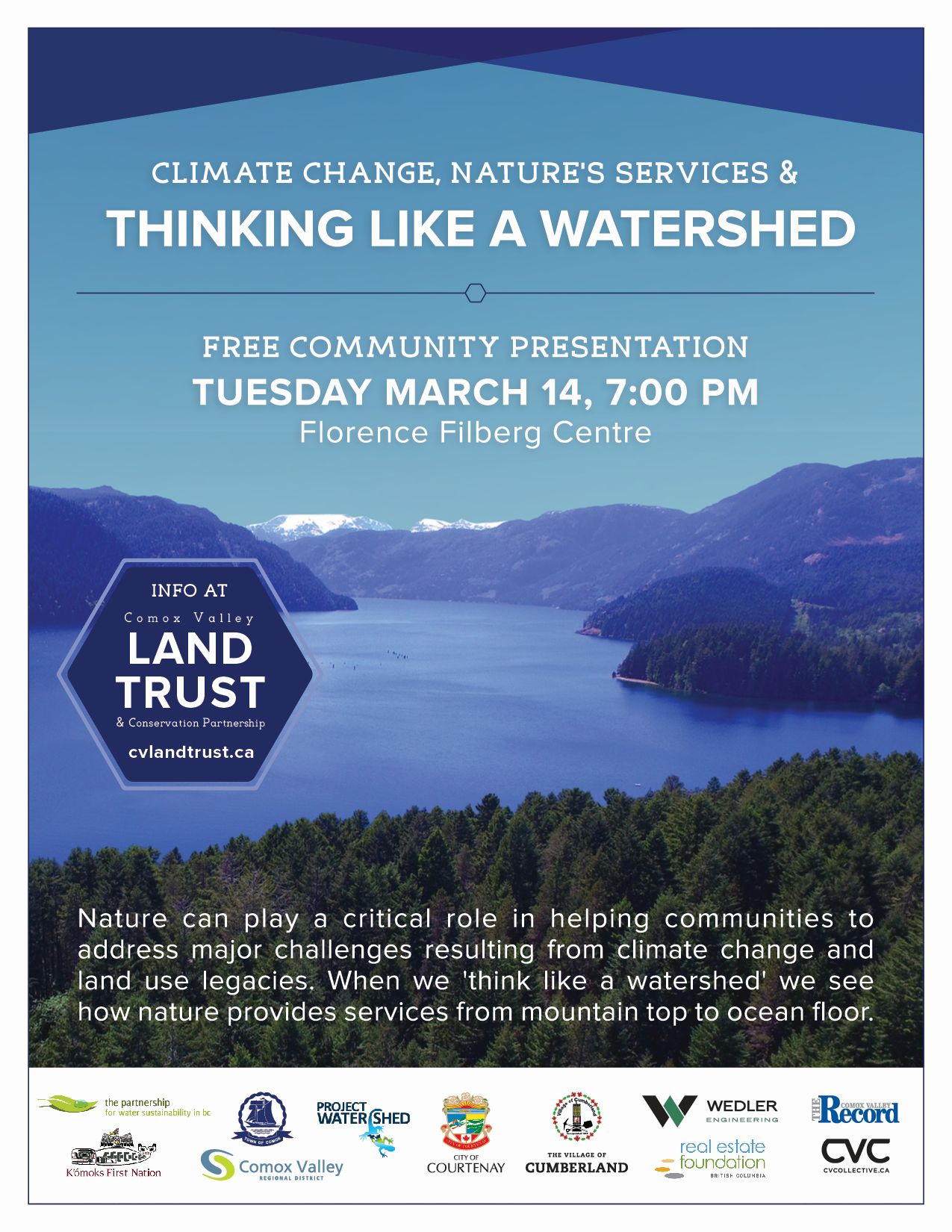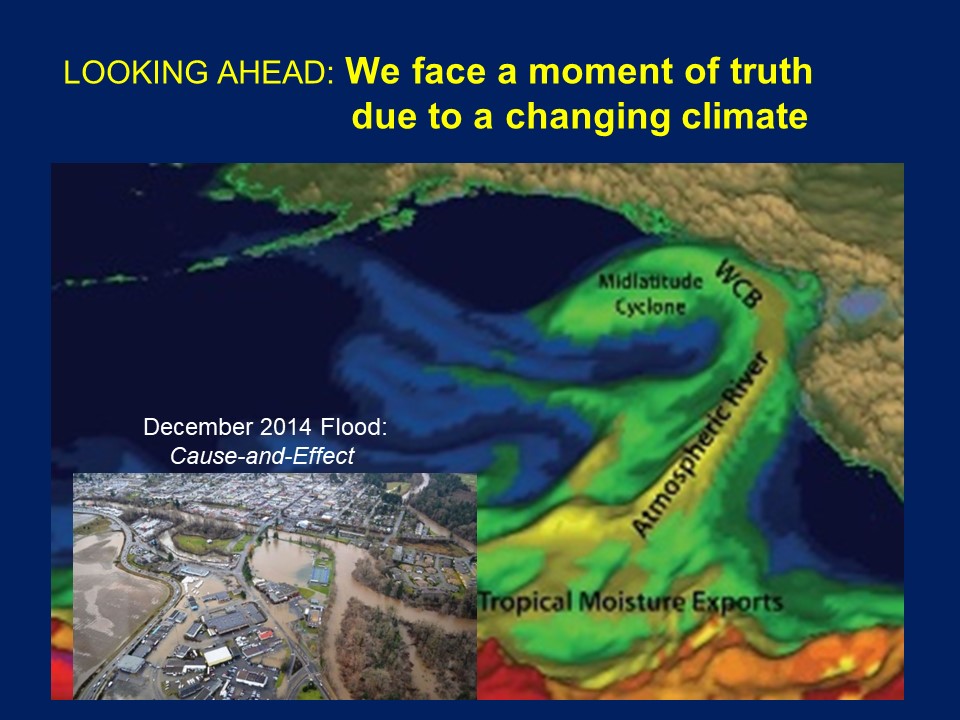Climate Change, Nature’s Services & Thinking Like a Watershed on Vancouver Island: Comox Valley Eco-Asset Symposium started a regional conversation about “Sustainable Watershed Systems, through Asset Management” (March 2017)
Exploring Eco-System Services and Eco-Asset Management Opportunities in Comox Valley Watersheds
The Comox Valley on Vancouver Island is facing a long list of challenges as more frequent and intense winter storms and summer droughts overwhelm engineered infrastructure and natural systems (that have been degraded over time by land use activities). It is feast AND famine!
 “In March 2017, the 22 environmental and ratepayer groups comprising the Comox Valley Conservation Partnership hosted a symposium to explore ‘design with nature’ solutions,” stated Tim Ennis, Executive Director, Comox Valley Land Trust.
“In March 2017, the 22 environmental and ratepayer groups comprising the Comox Valley Conservation Partnership hosted a symposium to explore ‘design with nature’ solutions,” stated Tim Ennis, Executive Director, Comox Valley Land Trust.
“The symposium spotlight was on the potentially powerful and cost-effective role that ecosystem services can play in an infrastructure strategy. The audience attracted an audience of 180-plus, and the majority came from outside the Comox Valley.
“The purpose of the Symposium was to build local knowledge and interest in how to apply eco-asset management principles at the local level. The Symposium was very much about setting in motion a mind-set change. It was therefore essential that everyone step back and see the big picture.”

Capacity crowd for the Comox Valley Eco-Asset Symposium, held at the Filberg Centre in the City of Courtenay on Vancouver Island
Symposium Objectives
- To bring together professionals, community leaders and local government to build energy and interest toward an Eco-Asset Management approach to addressing critical community infrastructure issues.
- To build capacity around Eco-Asset Management principals and to provide participants with tool kits to bring back to their respective shops.
- To set the stage for developing the business case for Eco-Asset Management in the Comox Valley.
- To contribute to innovative problem solving and action toward local initiatives. (Watershed Protections Plan, Estuary Restoration etc)
- For the Comox Valley Land Trust and Community Partnership to be a catalyst for subsequent Eco Asset Management processes with symposium participants.
To Learn More:
Download the Agenda and Presenters List for the 2017 Eco-Asset Symposium.
Visit the Symposium homepage on the Vancouver Island Water community-of-interest.
Sustainable Watershed Systems,
through Asset Management
Kim Stephens, Executive Director for the Partnership for Water Sustainability in British Columbia, delivered the keynote address at the Symposium. He connected the dots between past, present and future to prepare the audience for the breakout sessions that were the main focus of the day.
Looking Back to Understand the “New Normal”
 “When we reflect on the legacy of past community planning and infrastructure servicing practices, we see a recurring pattern of floods and droughts. That is the New Normal,” stated Kim Stephens.
“When we reflect on the legacy of past community planning and infrastructure servicing practices, we see a recurring pattern of floods and droughts. That is the New Normal,” stated Kim Stephens.
“Simply put, what it comes down to is that the natural water balance of watersheds is out of balance in the urban environment. And on top of this, as explained by Bob Sandford in his public keynote, the global water balance is out of balance.
“And if the global water balance is out of balance, then certainly the Comox Valley water balance is out of balance.”
Looking Ahead to a Moment of Truth
“Last November, Bob Sandford and I were part of the Partnership team that organized the Flow & Grow Workshop in the Okanagan. My takeaway from Bob’s keynote at that event was the notion of atmospheric rivers,” continued Kim Stephens
“A 1-degree rise in global temperature means the water vapour in the atmosphere increases by 7 percent. And we see what that means on the ground in terms of the impact of the Pineapple Express. We are at a moment of truth. Time is of the essence.
“The flood that the City of Courtenay experienced in December 2014 illustrates the local impact of a global change.”
To Learn More:
Download What Happens on the Land Does Matter! – Moving Towards “Sustainable Watershed Systems, through Asset Management” to view the storyline for the keynote address by Kim Stephens. To watch his presentation, click on the image link to a YouTube video.




